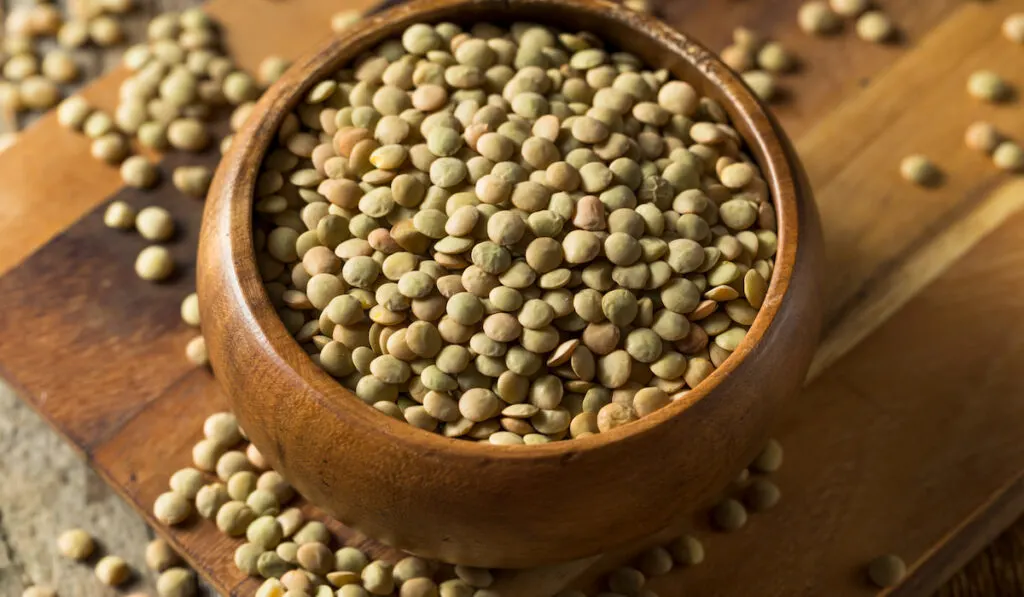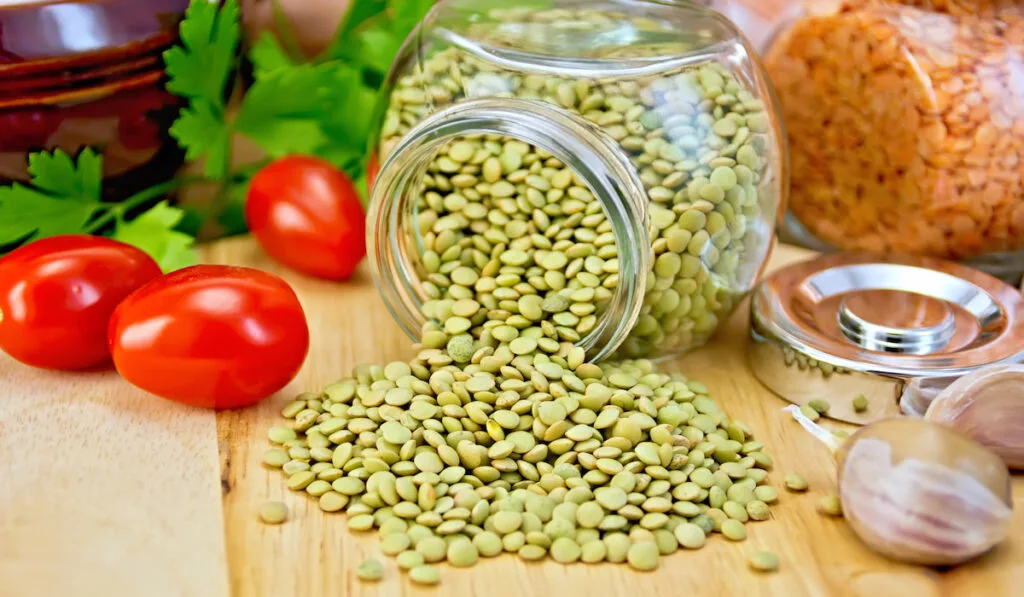Green lentils are one of the most popular types of lentils consumed across the world. This article will discuss the three main types of green lentils, where they grow, what their properties are, and how you can use them.
The three main types of green lentils are standard green lentils, French green lentils, and Puy lentils. All are used in a myriad of dishes from North America to Europe and beyond.
We’ll break down what these highly nutritious lentils are like and why they’re so popular among different cultural groups.
Table of Contents
What Distinguishes Green Lentils?
Lentils are protein-packed legumes that are low in fat and high in fiber. First grown in 8,000 B.C., they have since made their way across continents (source). With tons of nutritional value, it’s no wonder lentils are eaten around the world.
Generally speaking, there are 5 types of lentils. These include red, yellow, brown, green, and specialty varieties.
Brown and green lentils are the most popular types of lentils. While red and yellow lentils tend to fall apart while cooking, green lentils retain their shape.
Even so, they require the highest cooking time out of all lentils, simmering for around 45 minutes before being fully cooked.
Green lentils sport a robust, peppery flavor that is distinct from other lentils. They can also come in various sizes. Small green lentils are called Eston lentils, medium ones are Richlea lentils, and large ones are called Laird lentils.
These delicious legumes are ideal for salads and side dishes, but can also be used as a main dish if paired with other veggies or meats.
Standard Green Lentils

Standard green lentils are found in most supermarkets and are a staple of a varied, balanced diet. They are much larger than French green lentils and can be more earth-toned than their green lentil counterparts.
Cultivation
Many standard green lentils are grown in Canada, but they have also been cultivated in Europe and the Middle East, as well as on other continents.
Uses
Standard green lentils have a milder taste than French green or Puy green lentils, giving them more useability when it comes to varied dishes.
Nutritional Value
Standard green lentils have about half of the calories of French green lentils. This comes with less protein and carbohydrates.
One-fourth cup of standard green lentils has 10 grams of carbohydrates, 4.5 grams of protein, and as much fiber as French green lentils (source).

French Green Lentils
French green lentils come in a slate green color, although you may see some blue or black-ish undertones. They typically come in the Eston (small) lentil variety, about 2/3 smaller than other lentil varieties.
Cultivation
Contrary to their name, French green lentils are grown in North America or Italy. They use the same variety of lentils as Puy green lentils but host small differences.
While French green lentils are not referred to as lentilles du Puy, which is considered to be another type of superior lentil, they can be used to substitute Puy lentils in essentially any recipe.
Uses
French green lentils are often used in side dishes alongside pasta and veggies. You may also find them in a light soup, although red and yellow lentils tend to dominate this type of dish.
To cook French green lentils, you can combine 1 cup of lentils for every 2.5 cups of water. Bring the water to a boil and then simmer your lentils for about 40-45 minutes (source). Many chefs flavor the water before cooking with herbs to accentuate the lentils’ taste.
Nutritional Value
A general serving size for a small dish of French green lentils is ¼ cup (50 grams). This serving size accounts for about 180 calories, zero of them coming from fat.
French green lentils are low in cholesterol, sodium, and sugar, but high in fiber, carbohydrates, iron, and protein (source). There are 13 grams of protein in ¼ cup of lentils alone!

Puy Lentils
Puy lentils are more similar to French green lentils than to standard green lentils, but a bit more intense all around. They also have a slate-green color with blue and black undertones and are 1/3 the size of standard green lentils.
Puy lentils have a strong taste and are the most expensive type of green lentil.
Cultivation
Puy lentils, also called lentilles du Puy, come from central France. Originally grown in the volcanic soil in the Le Puy district in the Auvergne, Puy lentils have been cultivated in this region and this region only for nearly 2,000 years (source).
Of course, you could take Puy lentils and cultivate them elsewhere, but then they wouldn’t be authentic lentilles du Puy.
Uses
Puy lentils have the most peppery flavor of all the green lentils.
They are often served as a base for meat, game, or fish, and can also be served as a side or in salads like their green counterparts.
You will need 2.5-3 cups of water per cup of Puy lentils while cooking. They should be boiled for about 50 minutes.
Nutritional Value
Puy lentils are a great source of antioxidants. They have anthocyanins, which are the same source of the darker colors found in blueberries and black grapes.
They are also high in fiber and protein, mostly resembling the nutritional information of French green lentils (source).
Summary
Green lentils are one of the most popular types of lentils eaten across the world. With a firm texture and a peppery taste, they can be added to salads, sides, or used as a base for meat dishes.
The three types of green lentils are standard green lentils, French green lentils, and Puy lentils. All three of these are high in fiber and a great source of different vitamins and nutrients.
Standard green lentils are milder in flavor than French and Puy lentils, and also have fewer calories, carbs, and protein.
French and Puy lentils are higher in carbohydrates, antioxidants, calories, and protein than standard green lentils.
When creating a balanced diet, green lentils are an excellent addition to your road to health and happiness. Pick up a bag at your local grocer today and dig in!
